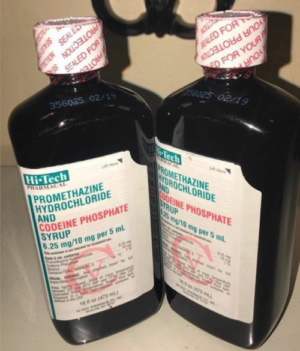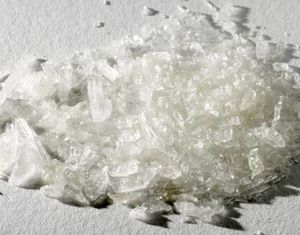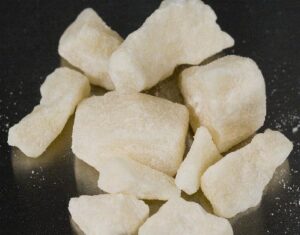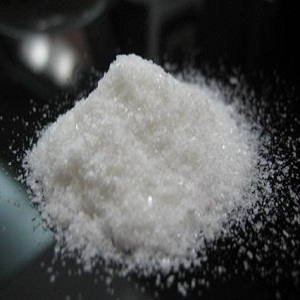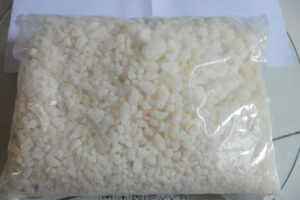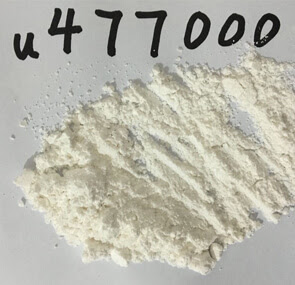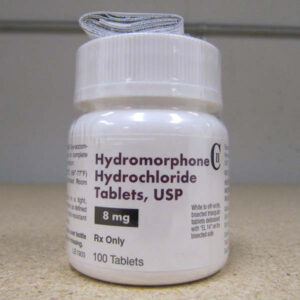I am a new user and have no idea what to expect.
Cannabis affects each person differently and some new users may not feel the full effect, or any at all, the first time they try it. The overall effect can be influenced by how your body metabolizes THC and to a lesser degree CBD and the other ingredients known as “Cannabinoids”. You might want to try a few different varieties and strains to find the one that you like the best. We recommend new users “start light.” Try a strain that has a lower THC content and if that works for you, explore products with a higher THC level.

I haven’t used cannabis in years, how do I know what to try?
Today’s legal marijuana has changed a lot. The good news is, it is better, safer, and there are many new ways to consume! It can also be a lot stronger, so start slow and evaluate how you feel along the way. Ultimately it’s almost certain that no matter how you ingest it, you won’t need nearly as much as you did years ago. You may need to familiarize yourself with some new names and terms– check out the glossary below provided by Leafly for more detailed information.

What’s the difference between Sativa, Indica and Hybrid?
There are three primary strain varieties:Sativa, Indica, and Hybrid. The varying percentages of THC, CBD, and other cannabinoids will determine the effects as well as factors like intensity and duration.
Sativa strains are a great option if you’re seeking something that will energize your body and mind. Often consumed for daytime activity, and some claim that Sativa strains deliver productivity-boosting effects. Try using Sativa the next time you’re going outdoors or trying to inspire your creative process.
Indica strains are an option if you want to relax. This strain is known for delivering a sense of calm, and the “couch-lock” effect. Try anIndica strain if you feel like relaxing after a long day, some claim that it helps them find relief from pain or insomnia.
Hybrid strains are a combination of the two. A typical Hybrid will leave you feeling uplifted, mellow, creative, and calm. Hybrids tend to be either Sativa or Indica dominant, which makes it easy to cater your experience based on what you select.
Cannabinoids are the chemical compounds unique to cannabis that act upon the human body’s cannabinoid receptors, producing various effects including pain relief and other medically beneficial uses. Marijuana’s most well-known cannabanoid is tetrahydrocannabinol (THC) due to the fact that it is the most abundant, and also because it produces the psychoactive effects (or the “high”) that drives the plant’s recreational use. However, there are over 85 known cannabinoids all with varying effects, so THC isn’t the only one.Cannabis is a plant genus that
Cannabis is a plant genus that produces three species of flowering plants: Cannabis sativa, Cannabis indica, and Cannabis ruderalis. Cannabis sativa and Cannabis indica are used to produce both recreational and medical marijuana. Cannabis ruderalis is rarely farmed due to its natural lower THC content and small stature, but there is some cross-breeding thanks to ruderalis‘s unique ability to auto-flower rather than mature based on light, so there is potential for this variety to grow in popularity. Cannabis is native to Asia, but grows almost anywhere and has long been cultivated both for the production of hemp and to be used as a drug.CBD is the abbreviation for
CBD is the abbreviation for cannabidiol, one of the at least 85 cannabinoids found in cannabis and the second only to THC when it comes to average volume. Recently, CBD has gained support for its use as a medical treatment as research has shown it effectively treats pain, inflammation, and anxiety without the psychoactive effects (the “high” or “stoned” feeling) associated with THC. H
Dispensary is a general term used to refer to any location where a patient or consumer can legitimately and safely access cannabis, whether the business is technically an access point, pick-up location. co-op, collective or any other version of a legal cannabis distributor.
Hemp is a fibrous product that can be produced from the male cannabis plant and can be used in the manufacture of rope, paper, beauty products, and a vast array of other products. Hemp plants have no value as a drug since they are males. However, they are still considered illegal in the United States.
Hybrid refers to a plant that is genetically a cross between one or more separate strains of cannabis. Hybrids can happen unintentionally, but they are usually bred specifically to combine desired traits of the original plants. Most marijuana on the market today is some form of hybrid.
Indica is the less scientific name for the Cannabis indica species of cannabis. Generally these plants originated in the Middle East and Asia and include both of the famous kush and Afghan lineages. Compared to their sativa counterparts, the plants are shorter, bushier and have more compact flower structure. This species tends to produce more relaxing physical effects and can have a sedati
Sativa is the less scientific name for the cannabis sativa species of cannabis plant. In general, these plants originated outside of the Middle East and Asia and include strains that are from areas such as South America, the Caribbean, Africa, and Thailand. These strains tend to grow taller as plants (usually over 5 feet), are lighter in color and take longer to flower. When consumed, sativas tend to be loved
Marijuana is the general term for female cannabis plants or their dried flowers. Females are distinct from male plants in that they are the ones that produce flowers which contain the high percentage of cannabinoids that hold both their medicinal and psychoactive properties.
Pot is a slang term for marijuana.Sativa is the less scientific name for
A strain is a specific variety of a plant species. Strains are developed to produce distinct desired traits in the plant and are usually named by their breeders (or by creative consumers). Strain names often reflect the plant’s appearance, its promised buzz, or its place of origin. Although the medical marijuana industry strives for consistency, strains can easily be mistakenly or purposely misidentified.THC is an abbreviation for tetrahydrocannabinol. It is the most well-known and most abundantly available cannabinoid in marijuana plants. THC is also the component in marijuana that is responsible for the psychoactive effects, or the “high.” Also known as delta-9-tetracannabinol, it was first isolated in 1964 and is thought to serve as a natural defense for the plant against pests. Research has shown THC to be an effective medical treatment for a range of conditions. There is no lethal dose of the compound in its natural form.Weed is a slang term for marijuana.About the PlantA backcross is a hybrid plant that has been bred with one of its parents (or a plant that is genetically similar) in order to create offspring that is closer to that of the original parent. For example, a grower could breed a plant with its own father to make sure the baby has its dad’s height. This is often done to maintain rarer strains or strengthen those with desired recessive genes.This refers to a clipping from a cannabis plant, which can then be rooted and grown through a cloning process of the mother plant, from which the clone was cut.A cross (referring to crossbreeding) is the result when two different plant strains are bred together. For example, Blue Dream is a cross between Blueberry and Haze strains.Feminized plants come from seeds that have been selectively bred to produce only female plants. Since female plants are the ones that produce flowers (which is where most of cannabis’ cannabinoids are found), they are the only ones that are used to create marijuana products. Feminized seeds are intended to make things easier for growers by eliminating the need to determine the sex of growing plants and remove males early on to prevent fertilization. Generally, feminized seeds produce the same quality of plants as naturally produced seeds.Flowering time refers to the time it takes for a plant to produce mature flowers. Cannabis flowering times are affected by the length of daily exposure the plant receives to sun (with the exception of the Cannabis ruderalis species, which flower automatically). When flowering times are reported for a strain, they are general estimates based on how the plants do on average in optimal conditions. Actual flowering times will vary and it is up to the grower to decide when to harvest for maximum benefit.You probably know what flowers are; they’re often the “pretty” part of a plant, and the same is true for cannabis. While cannabis flowers don’t have traditional petals or look like daisies, they are still the reproductive organ of the female plants. Cannabis flowers are the hairy, sticky, crystal-covered bits that are harvested and dried to be used as medication. When they are allowed to be fertilized by male plants, these flowers will produce cannabis seeds. If not, they will continue to produce the resin that contains their active cannabinoids until they are harvested or begin to die.An heirloom refers to a cannabis strain that was taken from its native homeland and propagated in another geographical location.Hydroponics refers to a system of gardening that does not use soil. Plants are grown in water and receive their nutrients from the addition of solutions rather than soil. For growers, hydroponic advantages include more control over nutrient intake and stability. In terms of marijuana production, plants grown hydroponically are sometimes said to have cleaner, more distinct flavors.Kush refers to a line of cannabis plants that hail from the Hindu Kush mountains in Afghanistan and Pakistan. Kush strains are indicas and have a unique aroma that have given them a large fan base. Specific breeds and plants are unique, but their aroma is generally described as “earthy” and often piney combined with citrus or sweet.A landrace refers to a local variety of cannabis that has adapted to the environment of its geographic location. This accounts for genetic variation between landrace strains, which have been crossbred to produce the cannabis variety we see today. Landrace strains are oftentimes named after their native region, like Afghani, Thai, and Hawaiian, and traces of landraces are sometimes detectable in the names of their crossbred descendants.OG is a term that’s now used to describe many strains, though the term originated to describe Southern California’s Ocean Grown Kush, which was quickly shortened to OG Kush. OG Kush grew quickly in fame and reputation. Most OGs are different variations of the original OG Kush genetics or are also ocean grown on the West Coast.Phenotype is a term that is heard most often in growing. It refers to the general physical characteristics of the plant such as height, color, branching, leaf configuration down to cell structure—any markers that can be used to identify and judge the healthiness of a plant.Pistils are part of a female plant’s anatomy. On cannabis, it’s identified as the little hair-like extensions on the flowers that range in color from white to red to darker orange-brown. When plants are going to be fertilized, the pistil acts to collect the male pollen. When plants are left unfertilized, as in the case of marijuana, the pistils change and can be indicators of plant ripeness.
A strain is a specific variety of a plant species. Strains are developed to produce distinct desired traits in the plant and are usually named by their breeders (or by creative consumers). Strain names often reflect the plant’s appearance, its promised buzz, or its place of origin. Although the medical marijuana industry strives for consistency, strains can easily be mistakenly or purposely misidentified.THC is an abbreviation for tetrahydrocannabinol. It is the most well-known and most abundantly available cannabinoid in marijuana plants. THC is also the component in marijuana that is responsible for the psychoactive effects, or the “high.” Also known as delta-9-tetracannabinol, it was first isolated in 1964 and is thought to serve as a natural defense for the plant against pests. Research has shown THC to be an effective medical treatment for a range of conditions. There is no lethal dose of the compound in its natural form.Weed is a slang term for marijuana.About the PlantA backcross is a hybrid plant that has been bred with one of its parents (or a plant that is genetically similar) in order to create offspring that is closer to that of the original parent. For example, a grower could breed a plant with its own father to make sure the baby has its dad’s height. This is often done to maintain rarer strains or strengthen those with desired recessive genes.This refers to a clipping from a cannabis plant, which can then be rooted and grown through a cloning process of the mother plant, from which the clone was cut.A cross (referring to crossbreeding) is the result when two different plant strains are bred together. For example, Blue Dream is a cross between Blueberry and Haze strains.Feminized plants come from seeds that have been selectively bred to produce only female plants. Since female plants are the ones that produce flowers (which is where most of cannabis’ cannabinoids are found), they are the only ones that are used to create marijuana products. Feminized seeds are intended to make things easier for growers by eliminating the need to determine the sex of growing plants and remove males early on to prevent fertilization. Generally, feminized seeds produce the same quality of plants as naturally produced seeds.Flowering time refers to the time it takes for a plant to produce mature flowers. Cannabis flowering times are affected by the length of daily exposure the plant receives to sun (with the exception of the Cannabis ruderalis species, which flower automatically). When flowering times are reported for a strain, they are general estimates based on how the plants do on average in optimal conditions. Actual flowering times will vary and it is up to the grower to decide when to harvest for maximum benefit.You probably know what flowers are; they’re often the “pretty” part of a plant, and the same is true for cannabis. While cannabis flowers don’t have traditional petals or look like daisies, they are still the reproductive organ of the female plants. Cannabis flowers are the hairy, sticky, crystal-covered bits that are harvested and dried to be used as medication. When they are allowed to be fertilized by male plants, these flowers will produce cannabis seeds. If not, they will continue to produce the resin that contains their active cannabinoids until they are harvested or begin to die.An heirloom refers to a cannabis strain that was taken from its native homeland and propagated in another geographical location.Hydroponics refers to a system of gardening that does not use soil. Plants are grown in water and receive their nutrients from the addition of solutions rather than soil. For growers, hydroponic advantages include more control over nutrient intake and stability. In terms of marijuana production, plants grown hydroponically are sometimes said to have cleaner, more distinct flavors.Kush refers to a line of cannabis plants that hail from the Hindu Kush mountains in Afghanistan and Pakistan. Kush strains are indicas and have a unique aroma that have given them a large fan base. Specific breeds and plants are unique, but their aroma is generally described as “earthy” and often piney combined with citrus or sweet.A landrace refers to a local variety of cannabis that has adapted to the environment of its geographic location. This accounts for genetic variation between landrace strains, which have been crossbred to produce the cannabis variety we see today. Landrace strains are oftentimes named after their native region, like Afghani, Thai, and Hawaiian, and traces of landraces are sometimes detectable in the names of their crossbred descendants.OG is a term that’s now used to describe many strains, though the term originated to describe Southern California’s Ocean Grown Kush, which was quickly shortened to OG Kush. OG Kush grew quickly in fame and reputation. Most OGs are different variations of the original OG Kush genetics or are also ocean grown on the West Coast.Phenotype is a term that is heard most often in growing. It refers to the general physical characteristics of the plant such as height, color, branching, leaf configuration down to cell structure—any markers that can be used to identify and judge the healthiness of a plant.Pistils are part of a female plant’s anatomy. On cannabis, it’s identified as the little hair-like extensions on the flowers that range in color from white to red to darker orange-brown. When plants are going to be fertilized, the pistil acts to collect the male pollen. When plants are left unfertilized, as in the case of marijuana, the pistils change and can be indicators of plant ripeness.
Weed is a slang term for marijuana.
A topical is a type of cannabis product where the active properties of the flowers have been extracted and added to a product such as a lotion or a cream that’s applied to the skin. The medicinal properties are absorbed through the skin and can be used to treat muscle aches, long term soreness, or ailments like dry skin.
This is the attendant working behind the counter at your local dispensary or retail cannabis shop who may be able to answer your questions on strains, cannabis products, and make suggestions based on your needs.
A backcross is a hybrid plant that has been bred with one of its parents (or a plant that is genetically similar) in order to create offspring that is closer to that of the original parent. For example, a grower could breed a plant with its own father to make sure the baby has its dad’s height. This is often done to maintain rarer strains or strengthen those with desired recessive genes.
This refers to a clipping from a cannabis plant, which can then be rooted and grown through a cloning process of the mother plant, from which the clone was cut.
A cross (referring to crossbreeding) is the result when two different plant strains are bred together. For example, Blue Dream is a cross between Blueberry and Haze strains.
Flowering time refers to the time it takes for a plant to produce mature flowers. Cannabis flowering times are affected by the length of daily exposure the plant receives to sun (with the exception of the Cannabis ruderalis species, which flower automatically). When flowering times are reported for a strain, they are general estimates based on how the plants do on average in optimal conditions. Actual flowering times will vary and it is up to the grower to decide when to harvest for maximum benefit.You probably know what flowers are; they’re often the “pretty” part of a plant, and the same is true for cannabis. While cannabis flowers don’t have traditional petals or look like daisies, they are still the reproductive organ of the female plants. Cannabis flowers are the hairy, sticky, crystal-covered bits that are harvested and dried to be used as medication. When they are allowed to be fertilized by male plants, these flowers will produce cannabis seeds. If not, they will continue to produce the resin that contains their active cannabinoids until they are harvested or begin to die.An heirloom refers to a cannabis
You probably know what flowers are; they’re often the “pretty” part of a plant, and the same is true for cannabis. While cannabis flowers don’t have traditional petals or look like daisies, they are still the reproductive organ of the female plants. Cannabis flowers are the hairy, sticky, crystal-covered bits that are harvested and dried to be used as medication. When they are allowed to be fertilized by
An heirloom refers to a cannabis strain that was taken from its native homeland and propagated in another geographical location.
Hydroponics refers to a system of gardening that does not use soil. Plants are grown in water and receive their nutrients from the addition of solutions rather than soil. For growers, hydroponic advantages include more control over nutrient intake and stability. In terms of marijuana production, plants grown hydroponically are sometimes said to have cleaner, more distinct flavors.
Kush refers to a line of cannabis plants that hail from the Hindu Kush mountains in Afghanistan and Pakistan. Kush strains are indicas and have a unique aroma that have given them a large fan base. Specific breeds and plants are unique, but their aroma is generally described as “earthy” and often piney combined with citrus or sweet.
OG is a term that’s now used to describe many strains, though the term originated to describe Southern California’s Ocean Grown Kush, which was quickly shortened to OG Kush. OG Kush grew quickly in fame and reputation. Most OGs are different variations of the original OG Kush genetics or are also ocean grown on the West Coast.
Ruderalis is a low-THC cannabis variety that is primarily selected by breeders for its CBD-rich genetics. Unlike Cannabis sativa and indica, which use light cycles to flower, ruderalis is an “autoflowering” variety, meaning it flowers with age. Originating in Russia, ruderalis is a hardy plant that can survive harsh climates.
Trichomes are the resin production glands of the cannabis plant. In Greek the word means “growth of hair,” and while these sticky little protrusions can make plants appear a little hairy, they are not hairs, nor are they “crystals,” which is how they are often described. THC, CBD and other cannabinoids are all produced in these glands.
A tincture is a liquid cannabis extract usually made with alcohol or glycerol that is often dosed with a dropper. Tinctures can be flavored and are usually placed under the tongue, where they are absorbed quickly. Effects can be felt within minutes. Tinctures can also be mixed into a drink, but in these cases effects will take longer because the tinctures will be absorbed by the digestive sy
Wax is another form of concentrate.
Pistils are part of a female plant’s anatomy. On cannabis, it’s identified as the little hair-like extensions on the flowers that range in color from white to red to darker orange-brown. When plants are going to be fertilized, the pistil acts to collect the male pollen. When plants are left unfertilized, as in the case of marijuana, the pistils change and can be indicators of plant ripeness.
BHO stands for butane hash oil and is a potent concentrate of cannabinoids made by dissolving marijuana in its plant form in a solvent (usually butane). The resulting product has very high THC levels (generally more than flowers or hashish) and is a thick, sticky oil. BHO is also referred to as honey oil, “dabs” or “dabbing,” earwax, or shatter, depending on the manufacturing method.
Cannabis wrapped in a tobacco leaf cigar or cigarillo paper. The cigar may be hollowed out and then re-rolled with cannabis, and the origin of the name was coined due to the popularity of the brand Phillies Blunt Cigars. Blunts often burn longer than joints and are usually found in larger social gatherings.
A large pipe, usually made of glass, that uses water to diffuse and cool the smoke as you breathe it into your lungs.
A handheld pipe, usually made of glass, with a water reservoir at the bottom to cool and diffuse the smoke before it is inhaled.
Bud refers to the actual flower of the marijuana plant. These are the fluffy parts that are harvested and used for recreational or medicinal purposes as they contain the highest concentrations of active cannabinoids.
CO2 oil is a cannabis concentrate, made from the Supercritical CO2 extraction process. Supercritical CO2 is a fluid state of carbon dioxide held at or above the critical point of temperature and pressure, which can be used as a solvent in the cannabis extraction process.
Concentrates are a potent consolidation of cannabinoids that are made by dissolving marijuana in its plant form into a solvent. The resulting product has very high THC levels (generally more than flowers or hashish), and can produce varying products that range from thick sticky oils (BHO) to moldable goo (budder/wax) to resinous bits (shatter). Referred to by a variety of slang terms, the classification of concentrates is often dependent on the manufacturing method and the consistency of the final product.
A dab is a slang term used to refer to a dose of cannabis concentrates “dabbed” onto a redhot surface and inhaled. The act of “dabbing” refers to partaking in dabs.
Edibles are medicated edible goods that have been infused with cannabis extracts. They are commonly baked goods such as cookies and brownies, but options as varied as flavored coffee drinks, breads, and candies exist as well. Dispensaries also often sell marijuana-infused butters or oils for patients or consumers to make their own edibles. Consuming edibles means the active
Hash is short for hashish, which is derived from cannabis plants and can be used for consumption or medication. Production involves the removal of the plant’s trichomes by sieving or filtering. Once the cannabinoid-laden powder has been collected, it is typically pressed and ready to be used. Hash ranges in potency, but is generally stronger than straight flowers since everything but the active part of the plant has been removed. A similar concentrated product can also be produced chemically using a solvent; however, this product is commonly referred to as hash oil or “honey oil.
Pre-roll is a commonly used term that refers to a pre-rolled marijuana cigarette, slangily known as a joint. Many dispensaries have pre-rolls available for purchase.
Shatter or ice are terms used to refer to BHO.
A vaporizer is a device used to consume marijuana. It heats either flowers or marijuana-infused oils to a temperature that produces a cannabinoid-laced vapor to inhale. Vaporizing is healthier than smoking since there is no smoke to ingest, but this method still produces near instant effects.






